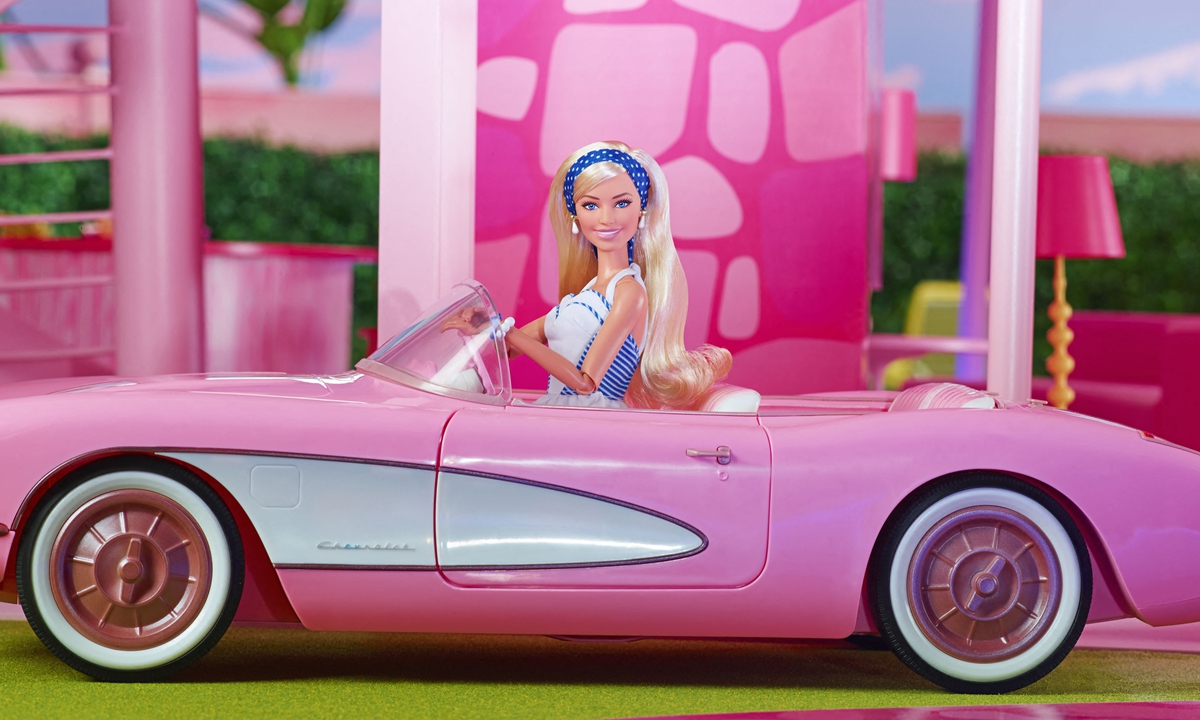
Photo: VCG
When Barbie dolls were first introduced, a US market researcher advised the founder, Ruth Marianna Handler, to emphasize that buying Barbie dolls could help children develop self-esteem and become ladies, thus finding their ideal husbands. Now, we can clearly see that the researcher understood the US market well, as according to data from Fortune magazine, households with daughters in the US own an average of two to eight Barbie dolls. However, we can also see how this strategy contradicts itself in the present. "Self-esteem" tends to lean toward "independence," but being a "lady" is essentially training for a male dominated US society, and the goal of finding an ideal husband further reduces women to men's appendages.
The movie Barbie explicitly presents the above contradiction. When Barbie enters the real world, a little girl angrily tells her that it's because of her Barbie that the women's rights movement has regressed 50 years. If we count back 50 years from the present year, we arrive at the second wave of feminism in the 1970s in the US - an era focused on "criticizing gender discrimination and eliminating gender differences." This was also the time when Barbie emerged and gained popularity. If we go back another 50 years based on this, we would reach the movement for American women's basic rights.
We must be very clear that these stages were not completed at specific historical moments. It is worth noting that women in the US were granted suffrage in 1920, France in 1944, and Portugal in 1976. These stages are not simply sequential; even today, different countries and regions on Earth may still be engaged in various movements and struggles at different stages. In Hollywood movies, we have heard voices of "female empowerment," "female domination," and even "female violence" in recent years. Films such as Bumblebee, Captain Marvel, and Alita: Battle Angel present waves of feminism, ranging from "women can save themselves" to "women can save men," and finally to "women can save the world" and "women can save the future."
Based on these works, the ideas of Barbie is self-evident. The different attitudes toward Barbie in the movie reflect the conflicts between different factions of feminism. Some believe that "Barbie is responsible for reducing the image of women to sexy pin-ups," despite the introduction of astronaut Barbie, surfer Barbie, rockstar Barbie, presidential Barbie, and Barbie with diverse skin tones, hair types, and body shapes in recent years. The gaze of the real world and the pink utopia of the Barbie world are both constructs of different factions. What the film ultimately wants to express and present is the social construction of gender. Whether Ken wants to replicate paternalism in the Barbie world or the Barbies reclaim power, it all comes down to affirming their own existence, which is irrelevant to biological gender from beginning to end.
Whether it's Barbie or Ken, they imitate and perform based on what they see and hear, reflecting the theory of gender performance, where Judith Butler roots gender in outward signs and actions.
"These performative acts do not express an 'innate' gender but actually create gender itself; the performance of gender produces the identity it claims to reveal."
The inverted portrayal of male-female relationships in the story emphasizes this exchange of identities. This emphasis not only vividly portrays the plight of US women in reality but also outlines the power dynamics behind gender performance.
The author is a film critic and teacher with the Beijing Film Academy.
URL: https://www.seeglobalnews.com/read-2086.html